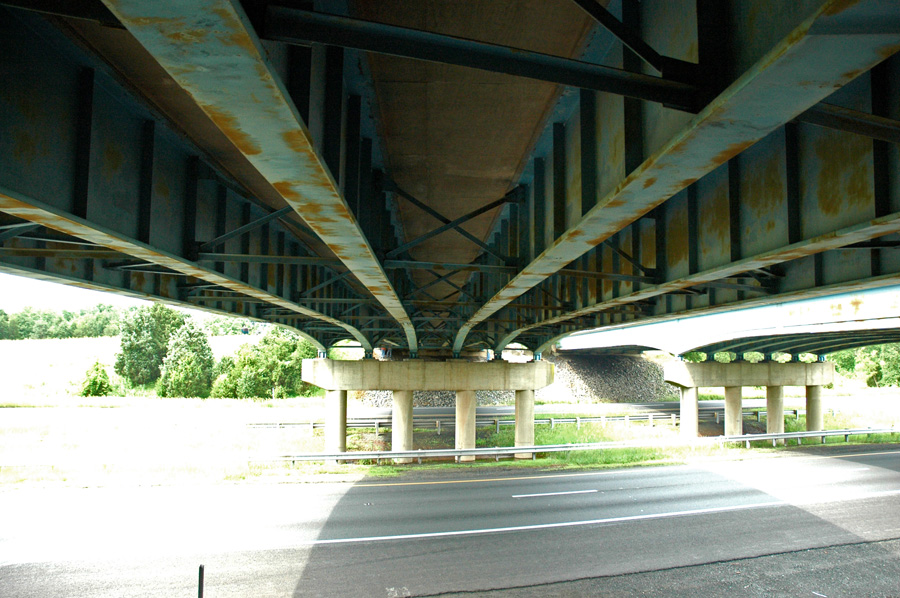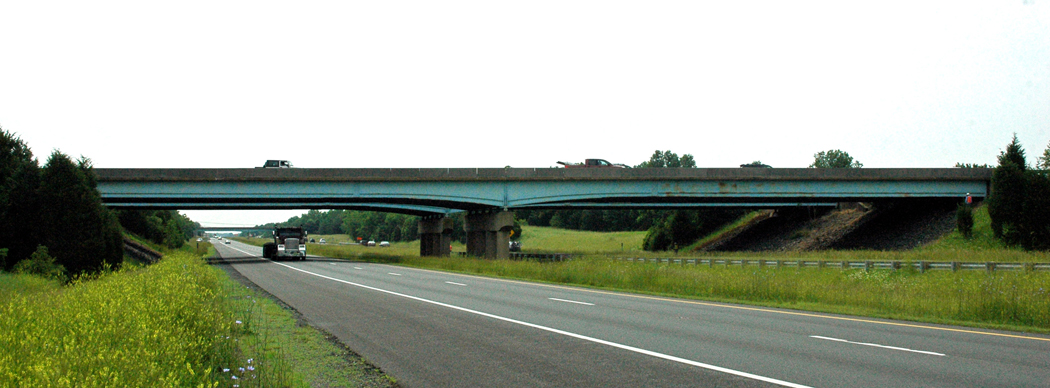U.S. Department of Transportation
Federal Highway Administration
1200 New Jersey Avenue, SE
Washington, DC 20590
202-366-4000
Focus
| Accelerating Infrastructure Innovations |
Publication Number: FHWA-HRT-09-016
Date: August 2009
The Federal Highway Administration's (FHWA) Long Term Bridge Performance (LTBP) program continues to move forward in advancing knowledge of bridge performance. The field work on the program's first pilot project will begin on a bridge on U.S. Route 15 over I-66 in Haymarket, Virginia, in September 2009. Designated under the 2005 Safe, Accountable, Flexible, Efficient Transportation Equity Act: A Legacy for Users (SAFETEA-LU), the 20-year or longer LTBP research program will conduct detailed inspections of, evaluate, and periodically monitor a representative sample of bridges nationwide using proven sensor technology. These bridges will represent many structural types and materials and a variety of conditions, exposures, and locations. The data collected by the program will lead to better understanding of bridge deterioration, improved design methods, and more effective preservation, maintenance, and repair strategies.
Launched in 2008, the first phase of the program included identifying the relevant data types to be collected; establishing an architecture that utilizes open and scalable data management and data analysis infrastructure; and developing protocols for data sampling, collection, and quality assurance. Also developed were the methodology and rationale for sampling bridges for long-term monitoring so that they are representative of the nearly 600,000 U.S. bridges on public roads contained in the National Bridge Inventory database, as well as protocols for testing, monitoring, and conducting bridge autopsies.
 |
The Long Term Bridge Performance program's first pilot project will be held on a bridge on U.S. Route 15 over I-66 in Haymarket, VA. |
 |
Focus group meetings were held with State transportation agencies around the country to determine which aspects of bridge performance were the highest priorities for States. "The major findings from the focus group meetings were remarkably similar from State to State. Around the country, regardless of the geographic region, bridge performance issues related to concrete bridge decks and joints were high on the list of priorities for each State department of transportation," says Hamid Ghasemi, Manager of the LTBP program at FHWA.
The pilot study phase of the program is designed to validate the methods and protocols developed during the first phase, with seven States selected to represent the many environmental conditions experienced throughout the United States. In addition to Virginia, the States participating in the pilot program are California, Florida, Minnesota, New Jersey, New York, and Utah. The pilot program is expected to last 2 years.
"While the pilot study will focus heavily on the validation of the protocols, methods, and guidelines for data collection, the pilot bridges will not be viewed as independent from the long-term data collection phase of the program, which will include detailed inspection and monitoring of a much larger population of bridges nationwide," says Ghasemi. "It is important that the selection, instrumentation, and data collection of the pilot bridges be consistent with the objectives of the long-term data collection phase, so that the information gathered during the pilot study will provide early results to bridge performance questions."
For more information on the LTBP program, visit www.fhwa.dot.gov/research/tfhrc/programs/infrastructure/structures/ltbp/, or contact Hamid Ghasemi at FHWA, 202-493-3024 (email: ltbp@dot.gov).